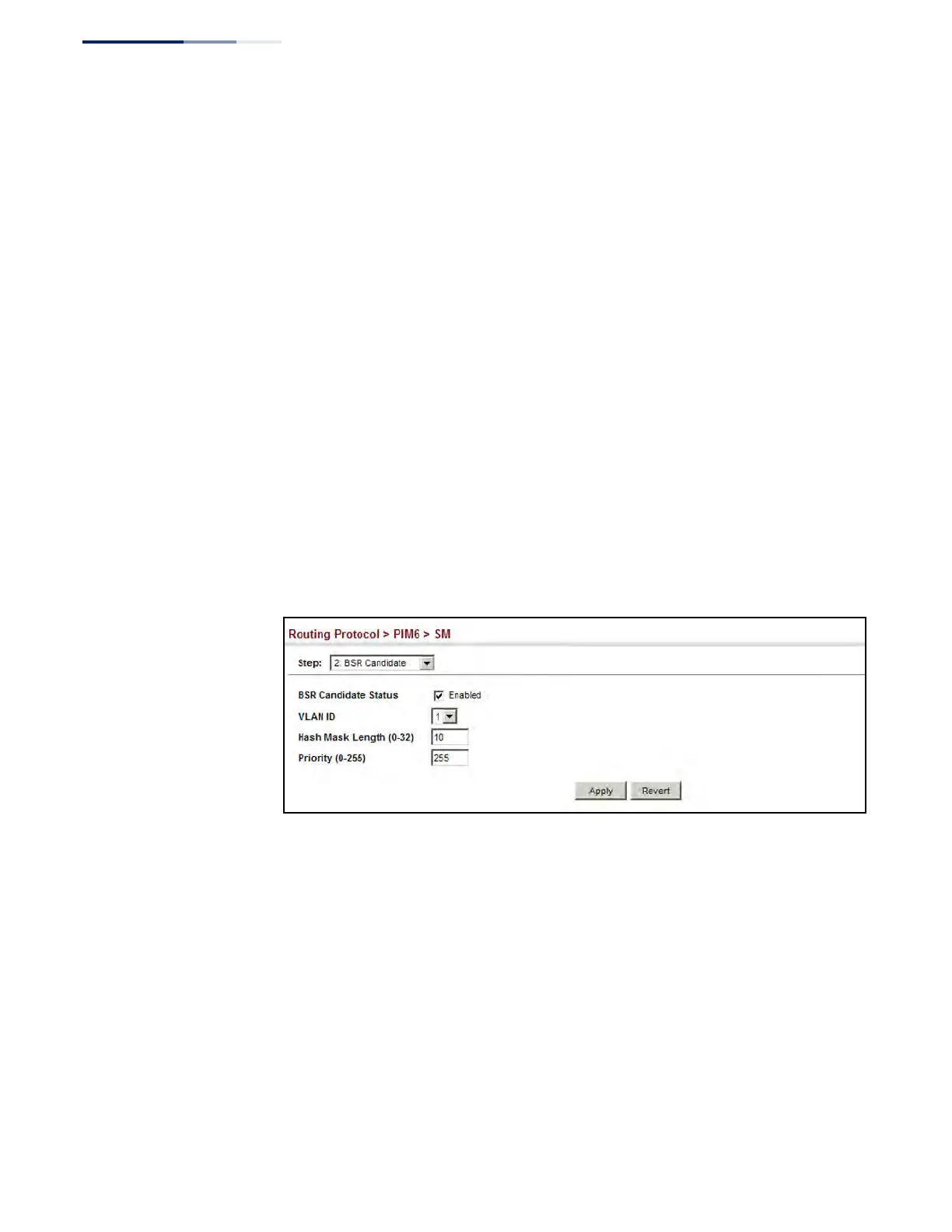Chapter 20
| Multicast Routing
Configuring PIMv6 for IPv6
– 784 –
portion of the hash is used, and a single RP will be defined for multiple groups.
(Range: 0-32; Default: 10)
◆ Priority – Priority used by the candidate bootstrap router in the election
process. The BSR candidate with the largest priority is preferred. If the priority
values are the same, the candidate with the larger IP address is elected to be
the BSR. Setting the priority to zero means that this router is not eligible to
server as the BSR. At least one router in the PIM6-SM domain must be set to a
value greater than zero. (Range: 0-255; Default: 0)
Web Interface
To configure the switch as a BSR candidate:
1. Click Routing Protocol, PIM6, SM.
2. Select BSR Candidate from the Step list.
3. Specify the VLAN interface for which this router is bidding to become the BSR,
the hash mask length that will subsequently be used for RP selection if this
router is selected as the BSR, and the priority for BSR selection.
4. Click Apply.
Figure 539: Configuring a PIM6-SM BSR Candidate
Configuring a PIM6
Static Rendezvous
Point
Use the Routing Protocol > PIM6 > SM (RP Address) page to configure a static
address as the Rendezvous Point (RP) for a particular multicast group.
Command Usage
◆ The router will act as an RP for all multicast groups in the local PIM6-SM domain
if no groups are specified. A static RP can either be configured for the whole
multicast group range FF00::/8, or for specific group ranges.
◆ If an IP address is specified that was previously used for an RP, then the older
entry is replaced.
◆ Multiple RPs can be defined for different groups or group ranges. If a group is
matched by more than one entry, the router will use the RP associated with the

